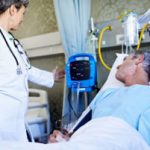Blog
Protecting patient safety in healthcare: How technology can help prevent adverse events
While “do no harm” isn’t actually part of the Hippocratic Oath, patient safety is a foundational goal of every hospital and health system. Despite the best efforts of healthcare professionals, adverse events—defined as “a harmful and negative outcome that happens when a patient has been provided with medical care”—still occur at an alarming rate.
Adverse events are often associated with poor communication. The Joint Commission found that poor communication is a contributing factor to 60% of adverse events in American healthcare organizations. Several of the Joint Commission’s National Patient Safety Goals directly address communications in hospitals and how certain areas might be targeted for improvement.
Clinical communication technology, such as a full suite of solutions that optimizes workflows and improves care team collaboration, empowers hospitals to prevent adverse events. Let’s look further into the specific ways hospitals can improve patient safety in healthcare.
Falls and slips
Slips and falls are the most commonly occurring preventable adverse events in hospitals. These injuries can occur when patients are frustrated or upset after their nurse call request goes unnoticed. A 2023 study found that the “associated per-patient costs are estimated to range from $351 to $13,616.”
With a powerful communication tool, hospitals can directly route nurse calls to nurses’ mobile devices for quicker notification. Nurses who carry in-house wireless phones or smartphones can call back to the patient via their pillow speaker to determine the patient’s needs and prioritize their response.
Laboratory
Laboratory is another key area where hospitals can improve their communication and overall patient safety. One of the Joint Commission’s National Patient Safety Goals (02.03.01) encourages hospitals to “Get important test results to the right staff person on time.”
This standard also applies to radiology. Both departments would benefit from critical test results notifications (CTRN), eliminating the need for somebody to pick up a phone and spend time trying to reach the ordering physician.
Technology automates this process by taking critical test results from your hospital’s laboratory and radiology information systems. CTRN enables quicker follow-up procedures by forwarding this information to the ordering physician’s mobile device.
Admission, discharge, and transfer
Bad patient experiences often happen during admission, discharge, and transfer. When patients get frustrated or upset from waiting, sometimes their safety is at risk.
During the admission process, messages can be automated to the attending physician and assigned nurse for that patient; both can visit and evaluate the patient as quickly as possible for treatment.
Once treatment is complete and the patient is ready to leave, it’s beneficial for the patient and healthcare organization to start the discharge process.
If a final consultation or specialist approval is standing in the way of the patient walking out the door, your employees can expedite the process with accurate on-call schedules and a communication tool for messaging the appropriate clinician.
Technology isn’t a silver bullet for operational challenges, but it can go a long way to prevent adverse events. Clinical communication solutions help ensure that clinically relevant information is delivered to the right person at the right time.
Automation not only helps your care teams make more informed decisions that enhance patient safety; it can facilitate faster response times, improving patient satisfaction.






